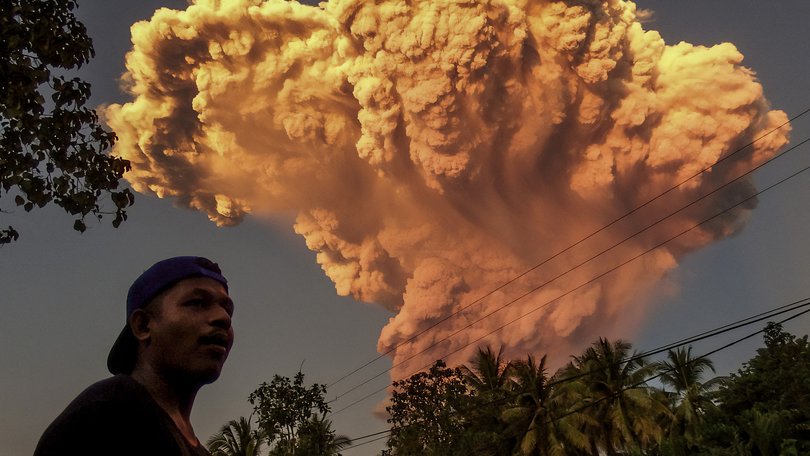THE NEW YORK TIMES: What is the Pacific ‘Ring of Fire’?

Hundreds of millions of people live along its path — in giant metropolises and in isolated mountain towns — tethered by a common geological fate forged by tectonic forces churning deep beneath their feet.
The Pacific “Ring of Fire,” as it has been described for more than a century, is a chain of seismologically and geologically active regions that encircle the Pacific Ocean, where many of the world’s biggest earthquakes, volcanic eruptions and tsunamis occur.
It spans a horseshoe-shaped area winding from New Zealand, through parts of Southeast Asia, through Japan, Alaska, down through the west coast of North and South America.
Sign up to The Nightly's newsletters.
Get the first look at the digital newspaper, curated daily stories and breaking headlines delivered to your inbox.
By continuing you agree to our Terms and Privacy Policy.Some of the most devastating mass disasters, in recent memory and in distant history, have occurred along the ring: Japan’s Fukushima disaster in 2011; the Great Chilean earthquake of 1960; the Indian Ocean earthquake and tsunami in 2004; and Alaska in 1964.
Many of the big future quakes that governments, scientists and emergency responders alike are bracing for are expected in its course — on California’s San Andreas, in Japan’s Nankai Trough, and on the Cascadia fault off the Pacific Northwest.
Here is what to know about the Pacific Ring of Fire.
The Ring is a collection of plate boundaries, mostly subduction zones.
The “Ring of Fire” is more of a convenient, colloquial concept to describe the plate boundaries that surround the Pacific Basin, rather than scientific terminology. It began with geologists’ observation that a lot of volcanoes occur along the band — hence the “fire” — and only came to be better understood in recent decades with advancements in theories of plate tectonics as to why so much of the world’s seismic activity occurred along the Pacific Rim.
The ring is formed of boundaries between the Pacific Plate, the largest of the plates that make up the Earth’s crust, and smaller neighbouring ones.
Most of the boundaries are made up of subduction zones, where one plate is being forced under the other, which produce some of the biggest and most hazardous earthquakes, said Michael Blanpied, a geophysicist and associate coordinator of the US Geological Survey’s Earthquake Hazards Program.
“The Pacific is unique in that it’s just completely ringed by boundaries that are very active,” he said.
Researchers are collaborating across regions to better understand risk.
Networks of highly sensitive seismic instruments around the world enable information about earthquakes and ensuing hazards such as tsunamis to be delivered across the world within minutes, if not seconds, vastly improving scientists’ ability to monitor and study them almost in real time.
The biggest task in studying activity along the Ring of Fire is trying to determine how close the next one may be, to better prepare the public and inform policy decisions.
Even if predicting when and where earthquakes will occur with any precision remains difficult, the awareness of the heightened risk for nations along the ring lends itself to collaborations to share information and technology and learn from each seismic activity, big and small, researchers say.
“It kind of ties together a lot of the research around the Pacific and also, that presents that common problem,” said Anna Kaiser, a seismologist at Earth Sciences New Zealand.
“It’s really important as scientists for us to collaborate and learn from other parts of the world and particularly around the Pacific.”
Past disasters inform our understanding of the major ones to come.
A big part of preparing for disasters yet to come along the Ring of Fire is studying past ones, including from centuries past documented to varying degrees.
What will determine the enormity of a coming earthquake is the amount of energy stored on a fault since the last major slip, creating the potential for a large scale ground movement.
“There is a rhythm, so if we knew what happened in the past, we would know more about what would happen in the future,” said Anthony Reid, a historian of Southeast Asia who researched records of past tsunamis in Indonesia after the devastating 2004 earthquake and tsunami.
This article originally appeared in The New York Times.
© 2025 The New York Times Company
Originally published on The New York Times
